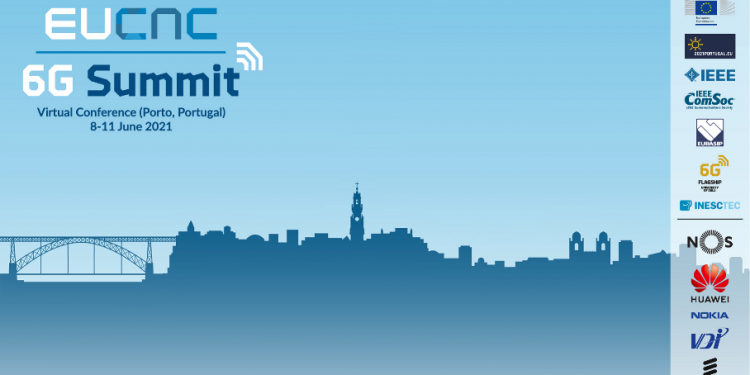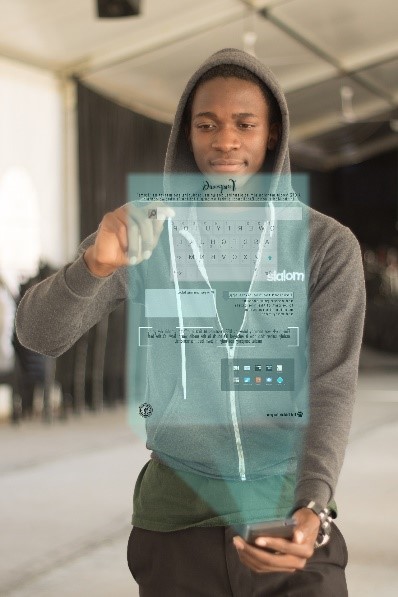More than two thousand experts were gathered at the 2021 Joint EuCNC (European Conference on Networks and Communications) & 6G Summit, one of the largest international events. Organised by INESC TEC, between June 8 and 11, the conference discussed the requirements and the 6G research programmes.
The event included workshops, plenary and technical sessions and a virtual exhibition with over 20 booths. The four keynote speakers were Michael Peeters, researcher at imec and professor at the University of Antwerp (Belgium), under the subject “Instruction to Antennas”; Manuel Ramalho Eanes, executive director of NOS, approached the question “How 5G will enable a Digital Society”; Roberto Verdone, professor at the University of Bologna and director of WiLab (Italy) spoke about “IoT and 6G”; and Peter Vetter, Head of the A-Lab at Nokia Bell Labs in the US, highlighted the “Human Potential in the 6G Era”.
Manuel Heitor, Portuguese Minister of Science, Technology and Higher Education launched the event on June 9 at 9 A.M. (CEST).
In the year that marked the 30º anniversary of the conference the registration was free of charge.

6G funding strategy
Under the motto “On the Road to 6G”, conference participants will discussed the advanced implementation of 5G and define the vision of 6G, expected to materialise over the next decade. “Researchers are already exploring 6G solutions, which will start being used in 2030. This conference will launch the European Union’s financing strategy for 6G research and define the vision of the next generation of mobile networks”, says Manuel Ricardo, researcher at INESC TEC.
The European Commission will establish a strategic partnership in Smart Networks and Services (SNS), at European level, supported by 900 million euros from the Horizon Europe programme – and leveraging a similar investment from the private side. This initiative will be based on the 700 million euros from the 5G PPP (Horizon 2020), in addition to the 60 million euros for projects that explore solutions beyond 5G, namely through eight initiatives that address specific technologies, and a 6G flagship project.
Besides implementing 6G research, the SNS partnership is planned to coordinate over 1 billion € of deployment actions under the CEF2-Digital programme, in particular on the cross-border 5G Corridors. This will be complemented by 5G national investments at Member States level under the umbrella of the Resilience and Recovery Fund, where about 150 billion € have been reserved for Digital investments.
What can we then expect from 6G?

“The communication networks will be more flexible, smart and ubiquitous. The communication systems will incorporate machine learning techniques, learn the users’ needs, and combine advanced techniques on communications, computing, sensing, and positioning”, explains the professor at the Faculty of Engineering of the University of Porto (FEUP).
6G networks will be important to support new types of communication, such as holographic and haptic communications (which allow us to use other senses, such as touch or smell), Internet for industry 5.0, Internet of Things, and communications between autonomous vehicles. The 6th generation will also explore new radio spectrum in the Terahertz which will enable user experiences of 100 Gbit/s, with latencies 10 times lower than those of 5G.
“6G has become the main research theme globally in wireless systems area”, says academy professor Matti Latva-aho, Director of 6G Flagship, the Finnish research program that launched the series of 6G Wireless Summits in 2019.
INESC TEC was the entity in charge of organising the 2021 Joint EuCNC & 6G Summit, supported by the Finnish 6G Flagship programme of the University of Oulu, the European Commission via EuConNects 4 project coordinated by INOV-INESC, the Portuguese Presidency of the EU Council 2021, and the Institute of Electrical and Electronics Engineers (IEEE) – the largest association of electronic and electrical engineers in the world. The event is sponsored by NOS, Huawei, Nokia, Virginia Diodes and Ericsson.
The INESC TEC researcher mentioned in this news piece was associated with: UP-FEUP.




 News, current topics, curiosities and so much more about INESC TEC and its community!
News, current topics, curiosities and so much more about INESC TEC and its community!